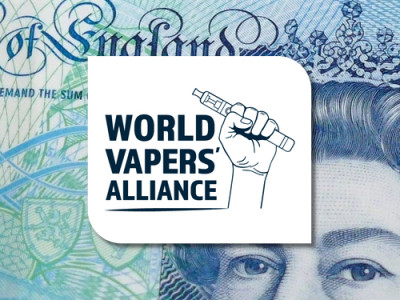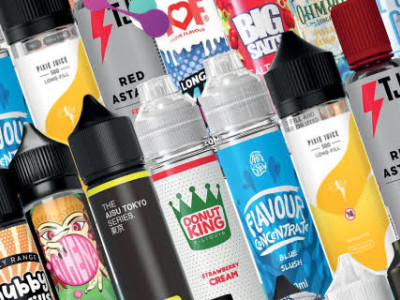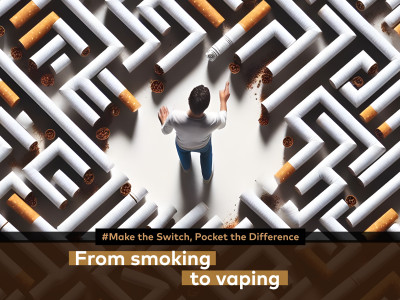A noticeable difference between vape research conducted by independent sources (and that from the tobacco industry) is that it tends to be accessible by everybody. The majority of papers produced by tobacco control are inevitably locked away behind a paywall, restricting public access and scrutiny.
In “Changes in Puffing Topography and Nicotine Consumption Depending on the Power Setting of Electronic Cigarettes”, the authors set out to record how varying the wattage output of a device changed how the 21 subjects vaped.
What they discovered was that vapers compensate for a lack of required nicotine in vapour by vaping more frequently. This behaviour is termed: “nicotine self-titration”.
The observations matched what is already observed in smoker behaviour. The study has ramifications for future studies: “These findings could contribute to the understanding of patterns of electronic cigarette use and could explain the preference of dedicated vapers to higher power devices. Additionally, laboratory studies evaluating aerosol emissions should consider using different puffing patterns according to the power settings tested.”
In “Nicotine Delivery to the Aerosol of a Heat-Not-Burn Tobacco Product: Comparison With a Tobacco Cigarette and E-Cigarettes”, the research team wanted to find out if HNB devices could match vape devices in nicotine delivery.
Tobacco and menthol HNB products were compared to cigalike, eGo, and variable wattage vape devices. They found that HNB delivers a greater level of nicotine than through vaping, but both systems were inferior to the nicotine delivery of a tobacco cigarette. “Intense” puffing with a vape product increased the volume of nicotine in the vapour.
“Nicotine delivery to the smoker is expected to play an important role in the ability of any harm-reduction product to successfully substitute smoking,” wrote the team. “The main findings were that the heat-not-burn tobacco sticks contained similar nicotine concentration to tobacco cigarettes, and that the levels of nicotine delivered to the aerosol of the heat-not-burn products were lower than tobacco cigarette, higher than e-cigarettes at low puff duration but lower than high-power e-cigarettes at longer puff duration.”
Dr Konstantinos Farsalinos has previously spoken about compensatory ‘self-titration’ behaviour and how it links to potential toxin exposure: “What I think vapers need to understand is that the amount of exposure depends on how much liquid you consume. The problem I see with subohming is that usually, when vapers transition from mouth-to-lung vaping to direct lung inhalation, they increase their liquid consumption by quite a lot. The more you consume, the more exposure to any potentially toxic chemical. If you double your consumption, you are doubling your exposure to toxins.”
“I think that today’s products release such low levels of aldehydes that you are probably exposed to more aldehydes by just staying at home and breathing the air in the house than from using an e-cigarette.”
Resources:
- Changes in Puffing Topography and Nicotine Consumption Depending on the Power Setting of Electronic Cigarettes - Farsalinos, Poulas, Voudris - Nicotine & Tobacco Research, Volume 20, Issue 8, 9 July 2018, Pages 993–997, https://doi.org/10.1093/ntr/ntx219
- Nicotine Delivery to the Aerosol of a Heat-Not-Burn Tobacco Product: Comparison With a Tobacco Cigarette and E-Cigarettes - Farsalinos, Yannovits, Sarri, Voudris, Poulas - Nicotine & Tobacco Research, Volume 20, Issue 8, 9 July 2018, Pages 1004–1009, https://doi.org/10.1093/ntr/ntx138
Dave Cross
Journalist at POTVDave is a freelance writer; with articles on music, motorbikes, football, pop-science, vaping and tobacco harm reduction in Sounds, Melody Maker, UBG, AWoL, Bike, When Saturday Comes, Vape News Magazine, and syndicated across the Johnston Press group. He was published in an anthology of “Greatest Football Writing”, but still believes this was a mistake. Dave contributes sketches to comedy shows and used to co-host a radio sketch show. He’s worked with numerous vape companies to develop content for their websites.
Join the discussion
Harm Reduction For The Rich
The United Kingdom risks becoming a harm reduction country only for the wealthy, according to Michael Landl of the World Vapers’ Alliance
Longfills as an Alternative to Disposables
The disposable vape ban will impact many people, but there’s no reason to be concerned… Grab yourself a pod kit and a Longfill and you’ll be back to vaping the way you want to, just in a cheaper, more environmentally friendly and legal way.
COP10 is a Threat to Safer Nicotine Products
The EU obscures its position on low-risk alternatives to smoking before the WHO COP10 conference in Panama, starting Monday
Nicotine Is Not A Culprit
Planet of the Vapes has always encouraged smokers to use the quit product that works best for them, and snus is a product that seems to be unfairly blocked because it contains nicotine












